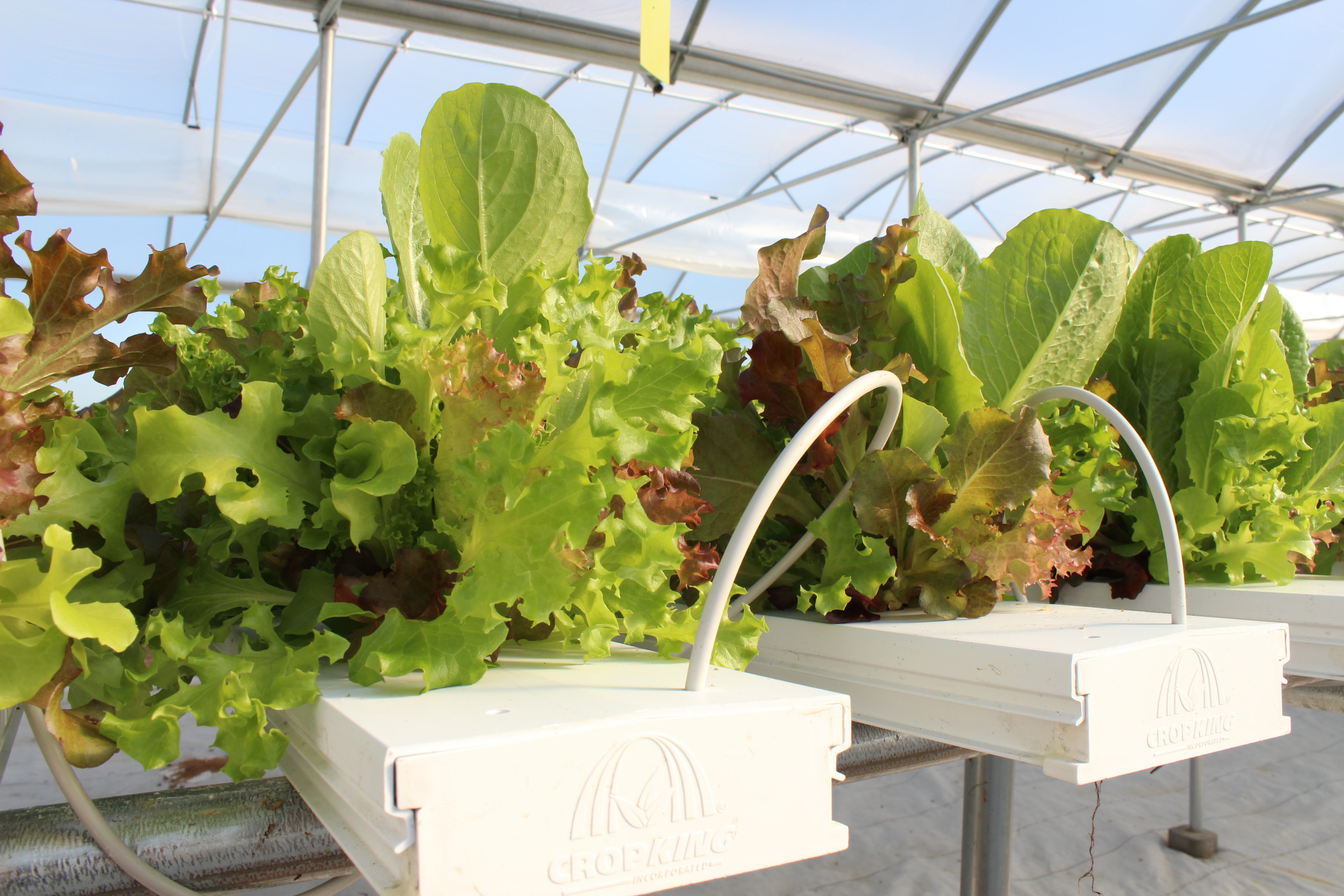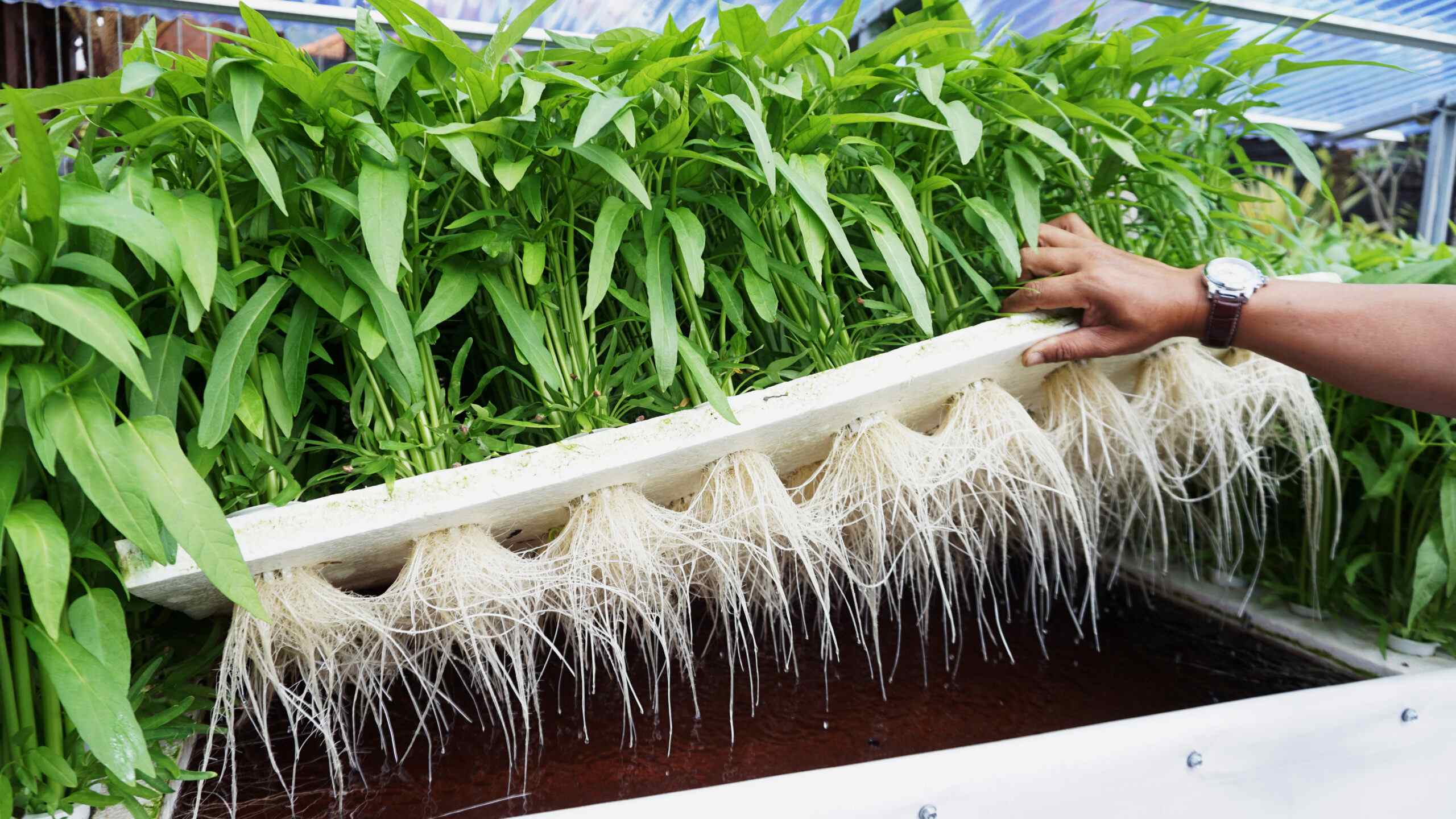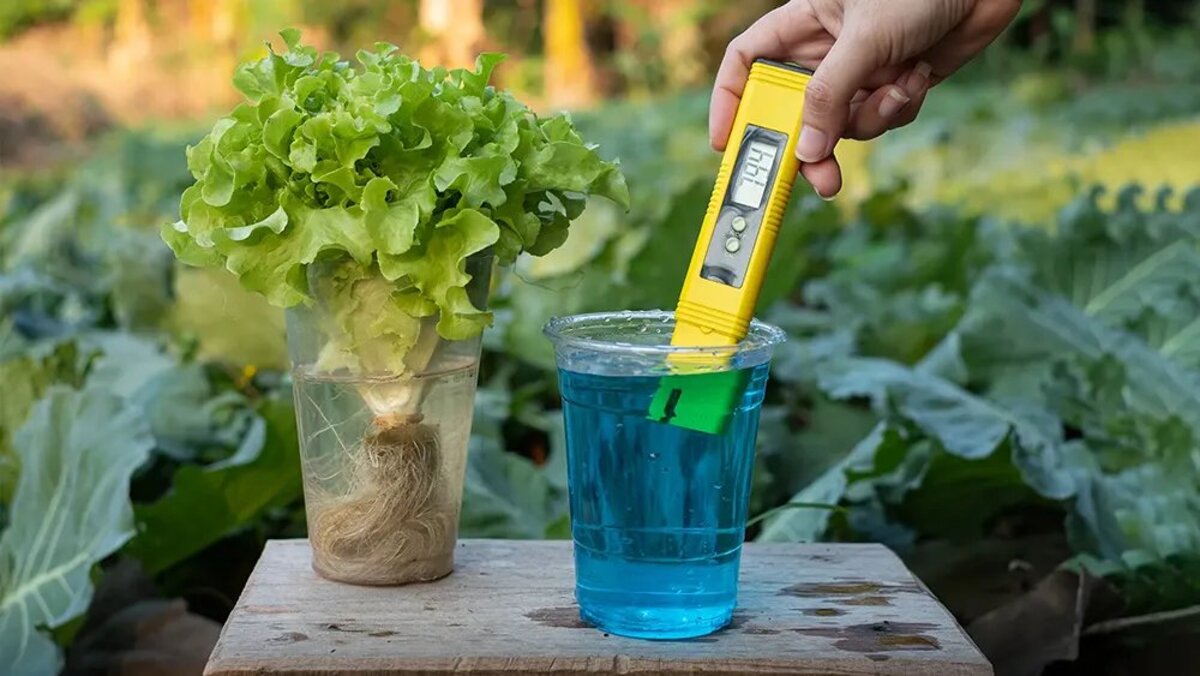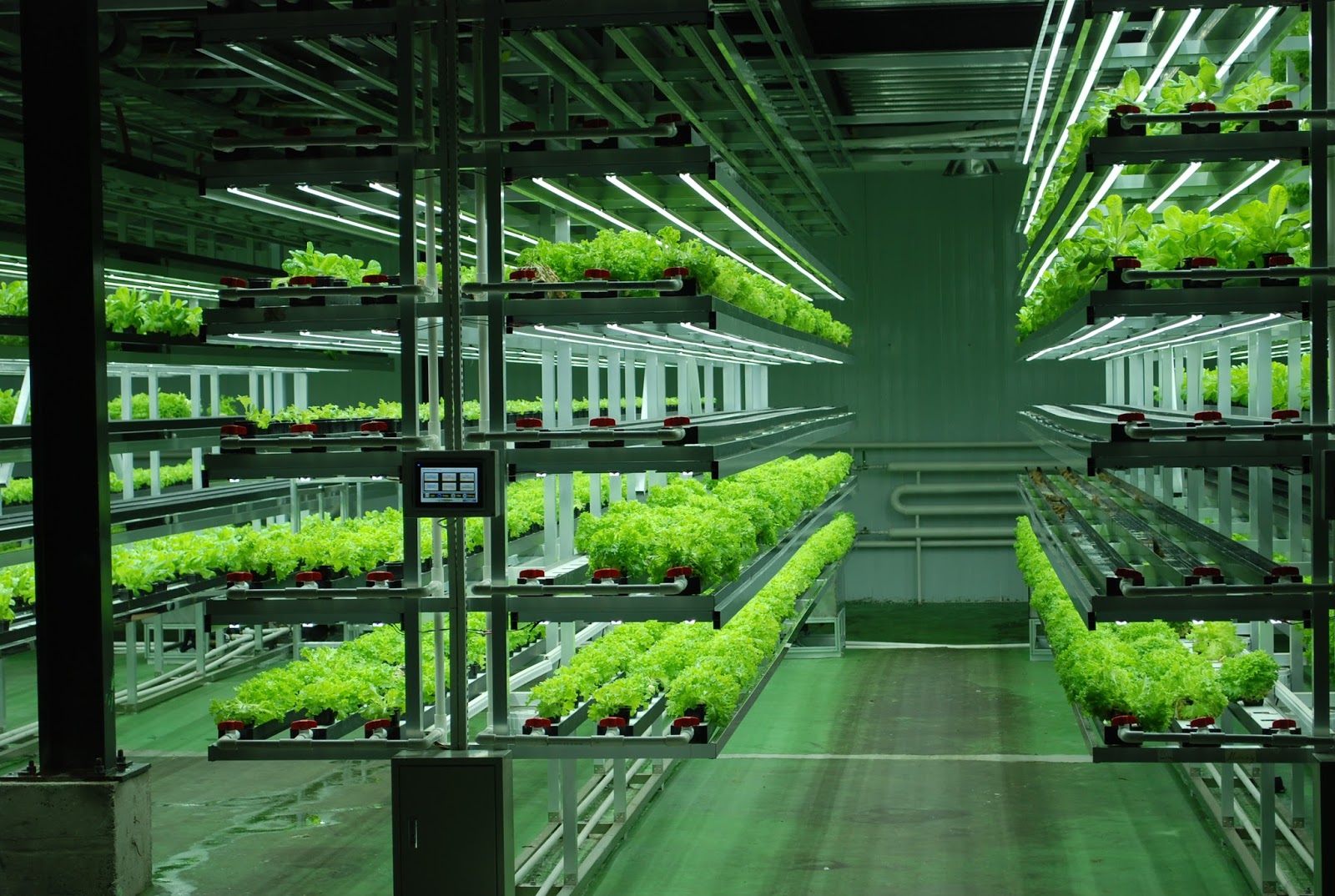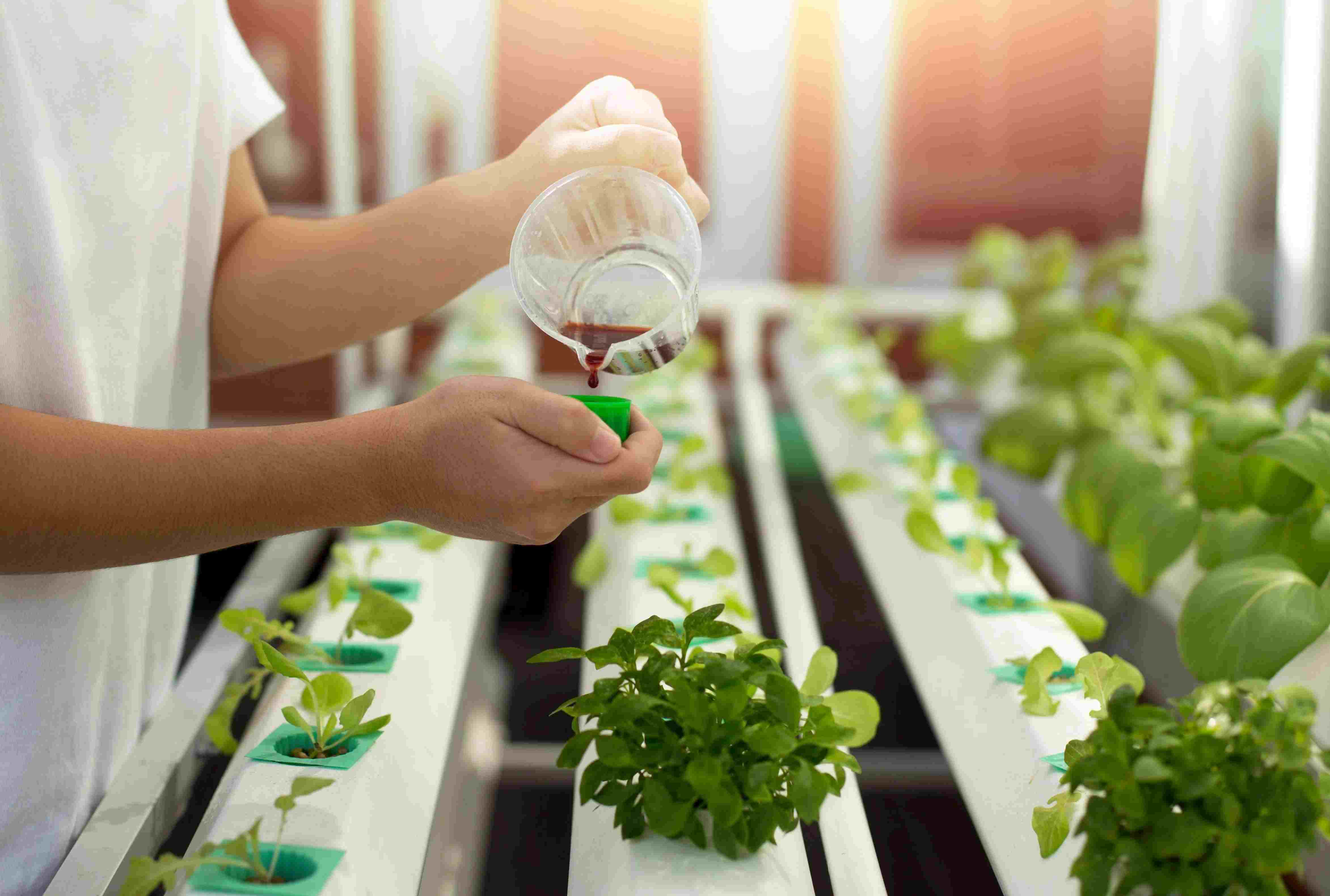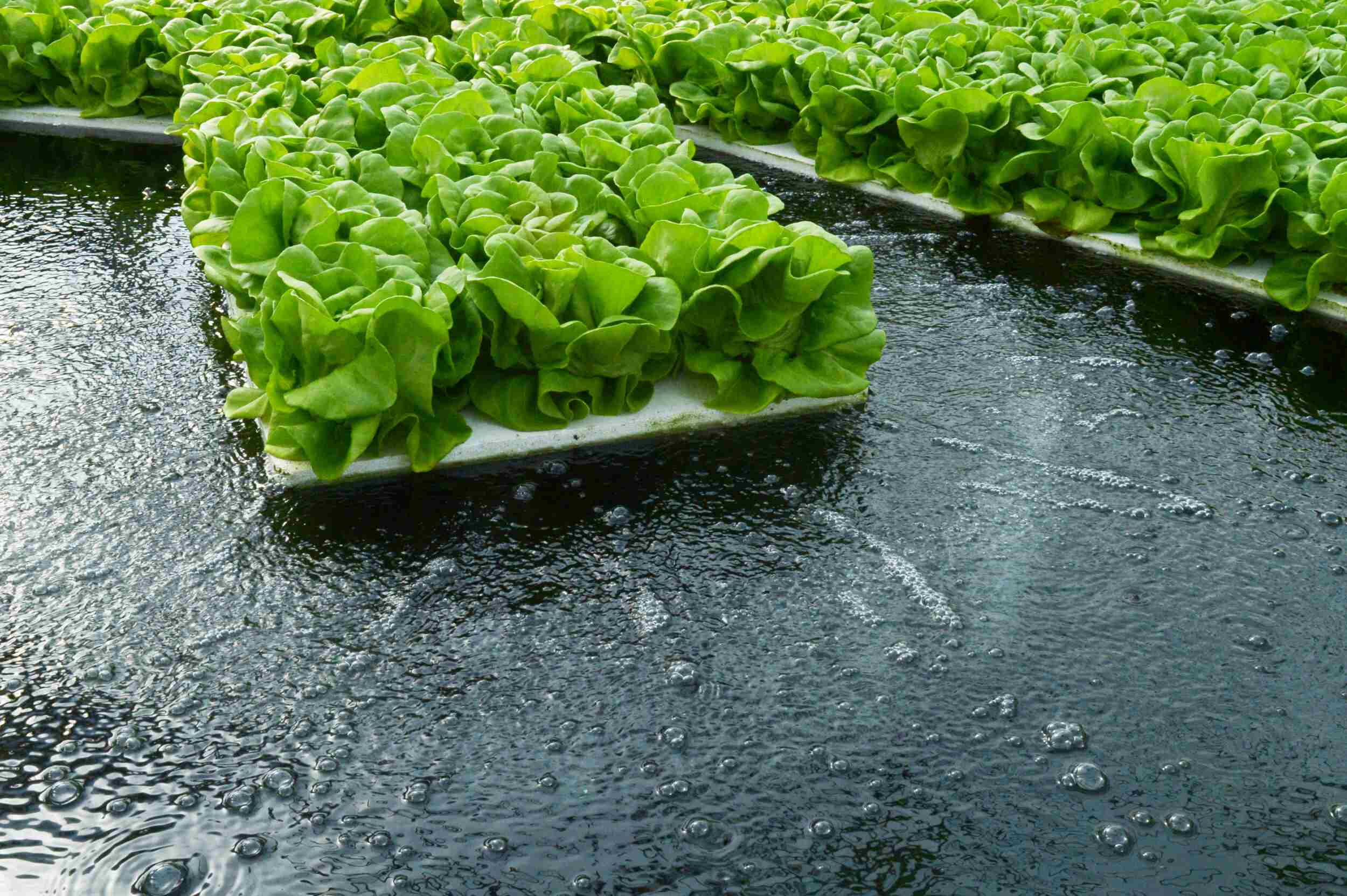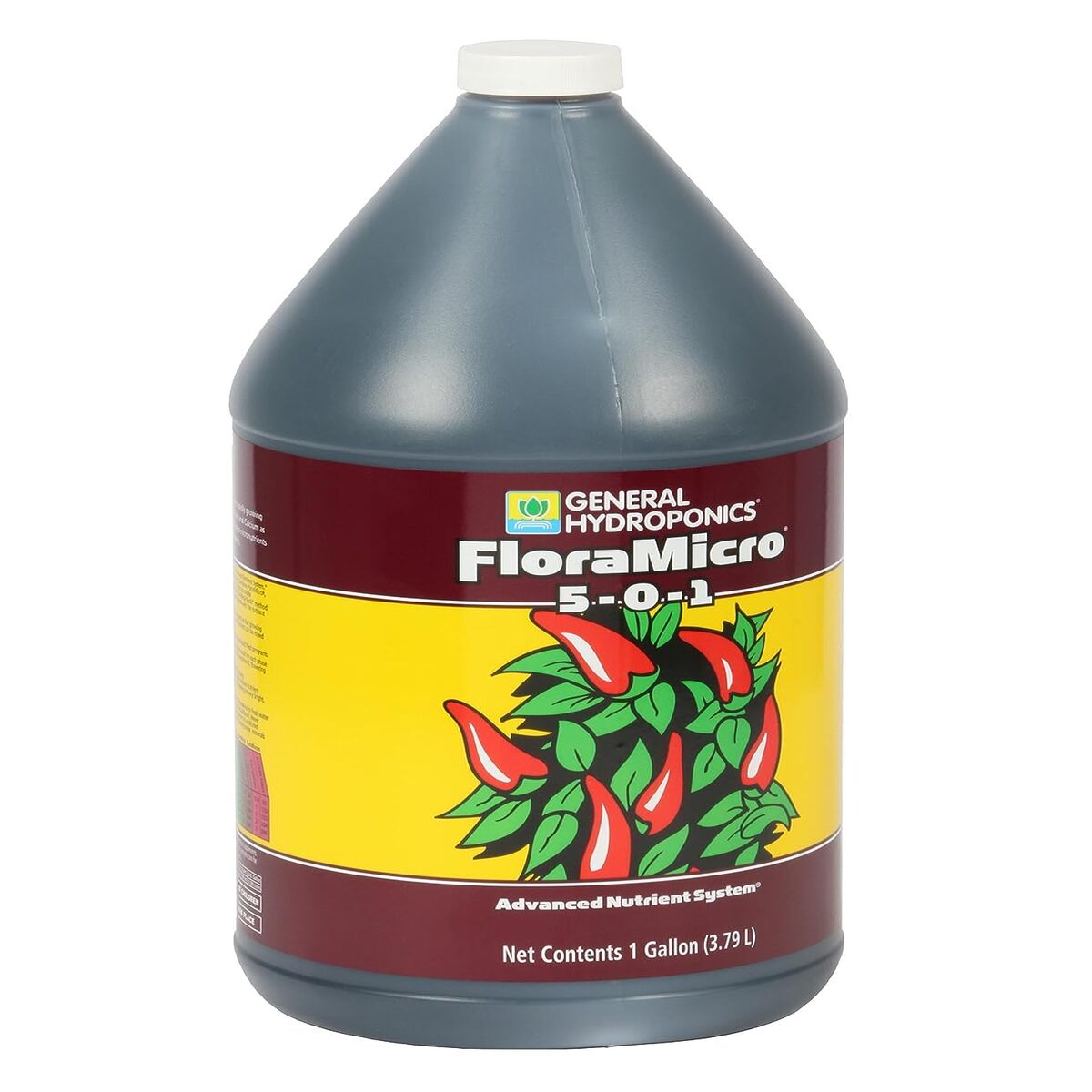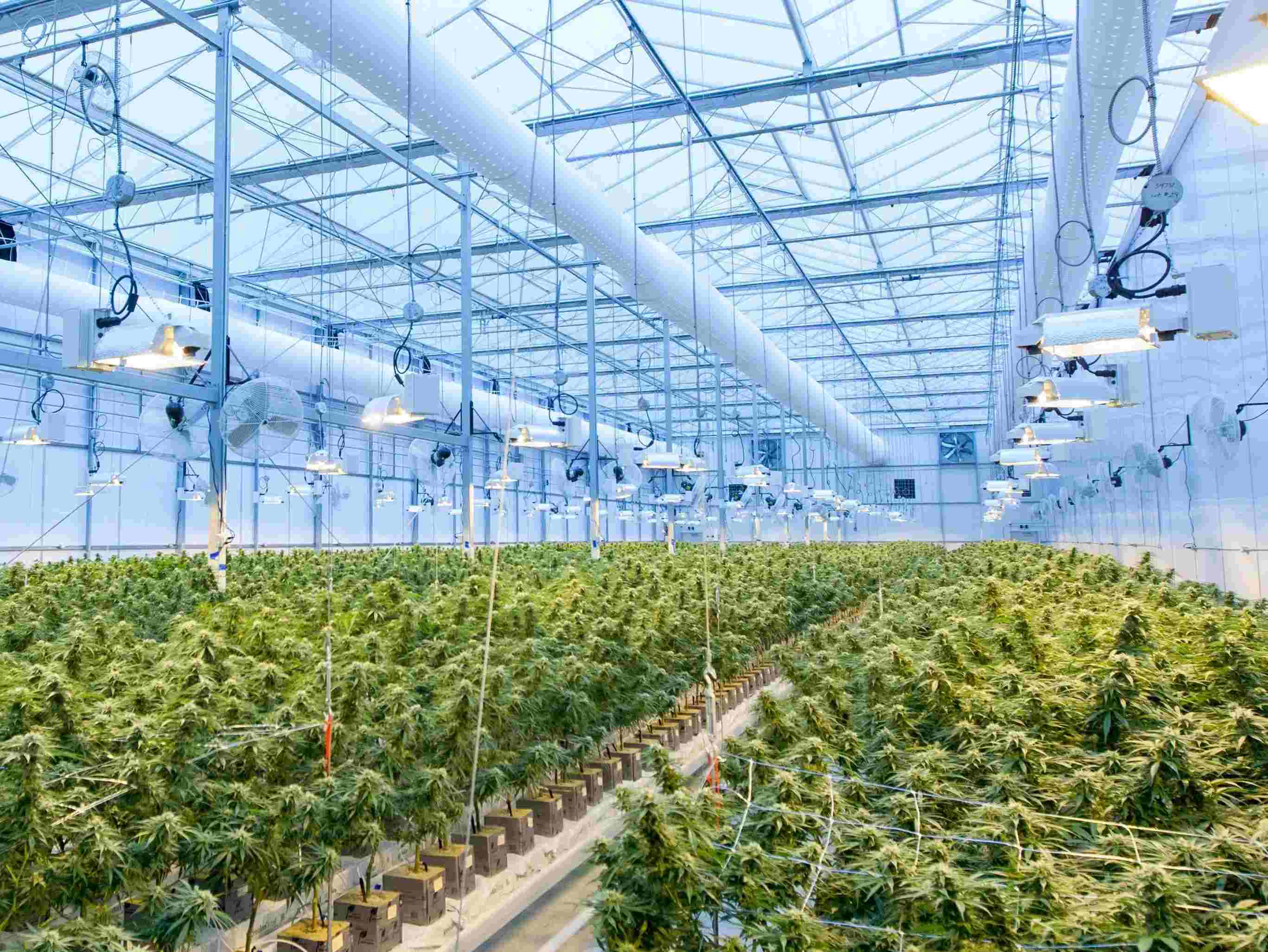Home>Gardening News and Trends>Latest News>What Is Hydroponics Definition
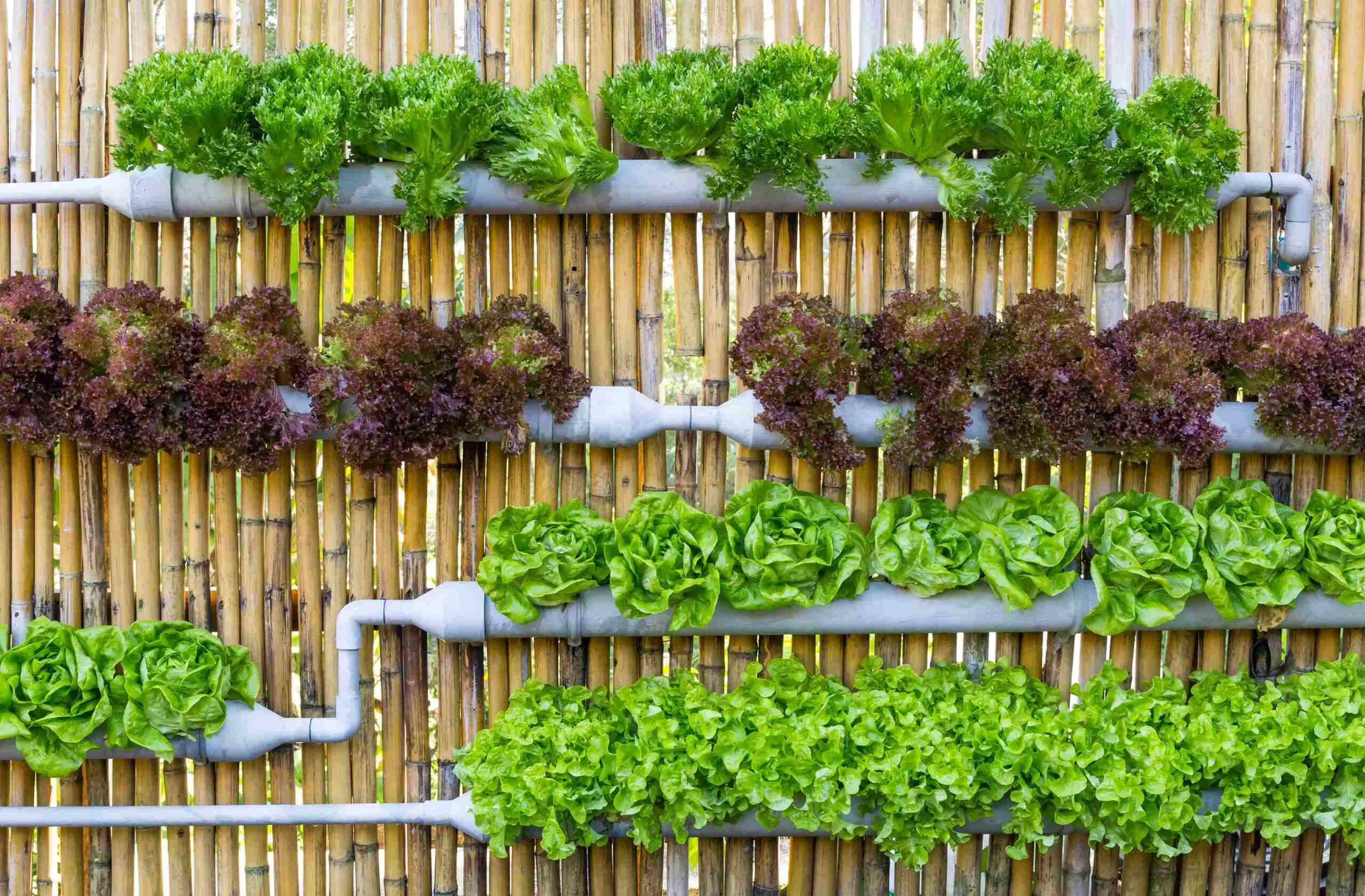

Latest News
What Is Hydroponics Definition
Modified: February 5, 2024
Discover the latest news and insights on hydroponics with our comprehensive definition guide. Learn about the benefits and basics of this innovative gardening technique.
(Many of the links in this article redirect to a specific reviewed product. Your purchase of these products through affiliate links helps to generate commission for Chicagolandgardening.com, at no extra cost. Learn more)
Table of Contents
- Introduction
- Understanding Hydroponics
- Benefits of Hydroponics
- Types of Hydroponic Systems
- Essential Components of a Hydroponic System
- Nutrient Solutions and pH Levels in Hydroponics
- Choosing the Right Plants for Hydroponics
- Maintaining and Monitoring a Hydroponic System
- Common Challenges in Hydroponics
- Conclusion
Introduction
Hydroponics is a revolutionary gardening method that has gained popularity in recent years. Unlike traditional soil-based gardening, hydroponics involves growing plants in water-based nutrient solutions, without the use of soil. This innovative technique allows plants to thrive in a controlled and optimized environment, resulting in faster growth, higher yields, and healthier plants.
With the increasing need for sustainable and efficient agricultural practices, hydroponics offers a promising solution. By eliminating the reliance on soil, hydroponics allows for the cultivation of crops in a variety of environments, including urban areas, where space and soil quality may be limiting factors. Additionally, the ability to closely monitor and adjust factors such as nutrient levels, pH balance, and lighting leads to more precise and efficient resource utilization.
The concept of hydroponics dates back centuries, with early civilizations experimenting with growing plants in water. However, advancements in technology and understanding have propelled hydroponics to new heights, making it a viable and accessible option for modern-day gardening enthusiasts, commercial growers, and researchers alike.
In this article, we will delve into the world of hydroponics, exploring its definition, benefits, different types of systems, essential components, nutrient solutions, ideal plants for hydroponics, system maintenance, and common challenges. Whether you are a beginner looking to start your own hydroponic garden or an experienced gardener seeking to expand your knowledge, this guide will provide valuable insights and guidance.
Understanding Hydroponics
Hydroponics is a soilless gardening method that involves growing plants in a nutrient-rich water solution. By providing all the essential nutrients directly to the roots, hydroponics bypasses the need for traditional soil. Instead, plants are supported by a medium such as perlite, coco coir, or vermiculite, which helps anchor the roots and provides stability.
One of the key principles behind hydroponics is the efficient use of resources. Unlike traditional gardening, where water and nutrients may be lost due to runoff or inefficient absorption by plants, hydroponics allows for precise control over these elements. The water in a hydroponic system is recirculated, minimizing waste and ensuring that plants receive the necessary amount of water without drowning their roots.
Another advantage of hydroponics is the ability to customize the growing conditions for different plants. Factors such as pH levels, nutrient concentrations, and lighting can be adjusted according to the specific needs of each plant variety. This level of control promotes healthier plant growth and can result in higher yields compared to traditional gardening methods.
Hydroponics also offers the flexibility to grow plants in any location, regardless of soil quality or space constraints. This makes it particularly attractive for urban gardening, where limited space may be a barrier to traditional gardening practices. Vertical hydroponic systems, for example, allow for the cultivation of plants in a compact, vertical space, maximizing efficiency and productivity.
Additionally, hydroponics can be a sustainable solution to address concerns related to land degradation, water scarcity, and the use of fertilizers and pesticides. By reducing the need for soil and optimizing resource use, hydroponics minimizes environmental impact and conserves resources.
Overall, by providing plants with a nutrient-rich water solution and closely controlling their growing conditions, hydroponics offers a highly efficient and versatile method of gardening. It enables the cultivation of plants in various settings, maximizes resource utilization, and promotes healthier plant growth. In the following sections, we will explore the benefits, types of systems, essential components, and other important aspects of hydroponic gardening.
Benefits of Hydroponics
Hydroponics offers a multitude of benefits that make it an appealing gardening method for both home gardeners and commercial growers. Let’s explore some of the key advantages of hydroponics:
- Water Efficiency: Hydroponics is incredibly water-efficient compared to traditional soil-based gardening. The recirculation of water in a hydroponic system minimizes water waste, as plants are only given the amount they need. This is especially crucial in regions experiencing water scarcity or for individuals looking to reduce their water consumption.
- No Soil Limitations: The absence of soil in hydroponics allows for flexible gardening in various settings. Whether you have limited space, poor soil quality, or live in an urban environment, hydroponics gives you the opportunity to grow plants where traditional gardening may not be feasible. Vertical hydroponic systems further maximize space utilization by allowing plants to grow upwards.
- Higher Yields: By providing plants with optimized growing conditions, hydroponics can result in higher yields compared to traditional gardening methods. The precise control over nutrient concentrations, pH levels, and lighting ensures that plants receive the ideal conditions for robust growth. Additionally, hydroponic plants often mature faster, allowing for multiple harvests in a shorter timeframe.
- Year-round Cultivation: Hydroponics enables year-round cultivation regardless of the season or climate. With the ability to create a controlled indoor environment, hydroponic growers can provide consistent lighting, temperature, and humidity for plants, allowing them to thrive at any time of the year. This is especially beneficial for growing high-demand crops that are typically out of season.
- Pest and Weed Control: Since hydroponics eliminates the use of soil, many common pests and weeds are significantly reduced or eliminated altogether. This reduces the reliance on pesticides and herbicides, making hydroponics a more environmentally friendly and sustainable option for plant cultivation.
- Conservation of Resources: Hydroponics optimizes resource utilization by focusing on the precise requirements of plants. Nutrients and water are delivered directly to the roots, minimizing waste and ensuring that plants receive the ideal amount. This conservation of resources is not only beneficial for the environment but also for growers looking to minimize costs and maximize efficiency.
These benefits highlight the advantages of hydroponics for sustainable and efficient plant cultivation. Whether you’re looking to grow fresh produce at home or run a commercial hydroponic farm, this innovative gardening method offers numerous advantages that can enhance your gardening experience and yield healthier, more abundant crops.
Types of Hydroponic Systems
Hydroponic systems come in various types, each offering unique advantages and suitability for different gardening situations. Let’s explore some of the most common types of hydroponic systems:
- Deep Water Culture (DWC): In this type of system, plants are suspended in a nutrient-rich water solution with their roots submerged. An air pump provides oxygen to the roots, promoting healthy growth. DWC systems are relatively simple to set up and are ideal for beginners.
- Nutrient Film Technique (NFT): NFT systems involve a thin film of nutrient solution flowing over the plant roots, which are partially exposed to the air. This type of system relies on gravity to drain and recirculate the nutrient solution. NFT systems are popular for growing leafy greens and herbs due to their efficient use of water and nutrients.
- Ebb and Flow (Flood and Drain): Ebb and flow systems work by periodically flooding the grow bed with a nutrient solution, which is then drained back into a reservoir. This cycle is controlled by a timer. The intermittent flooding facilitates nutrient absorption by the plants’ roots and allows for adequate oxygenation. Ebb and flow systems are versatile and can accommodate a wide range of plants.
- Aeroponics: Aeroponic systems mist the plant roots with a nutrient solution, suspended in the air. This method provides optimal oxygenation to the roots and is highly water-efficient. Aeroponics is known for its fast growth rates and is often used in commercial settings or for research purposes.
- Drip Systems: Drip systems deliver a nutrient solution to the plant roots via a network of tubes and emitters. The nutrient solution is dripped onto the growing medium or roots at regular intervals. Drip systems are versatile and can be used with various growing mediums, making them suitable for a wide range of plants.
- Wick Systems: Wick systems are one of the simplest and most low-maintenance hydroponic systems. Plants are placed in a growing medium, and a wick is used to draw up the nutrient solution from a reservoir and deliver it to the roots. While wick systems are relatively slow and may not be suitable for larger plants, they are easy to set up and require minimal monitoring.
Each type of hydroponic system has its advantages and considerations, such as complexity, scalability, and the types of plants it is best suited for. When choosing a hydroponic system, it’s important to consider factors such as available space, desired plant varieties, and your level of experience. By selecting the appropriate system, you can optimize plant growth and maximize your hydroponic gardening success.
Essential Components of a Hydroponic System
To set up a successful hydroponic system, there are several essential components that you need to consider. These components work together to create an optimal growing environment for your plants. Let’s explore the key components of a hydroponic system:
- Growing Medium: The growing medium in a hydroponic system provides support for the plants’ roots and helps with nutrient absorption. Common types of growing mediums include perlite, coco coir, vermiculite, and rockwool. The choice of growing medium depends on the type of plants you are growing and the specific requirements of your hydroponic system.
- Reservoir: The reservoir is a container that stores the nutrient solution for the plants. It should be made of a material that is non-toxic and light-proof to prevent algae growth. The size of the reservoir depends on the number of plants you are growing and the water requirements of your system.
- Water Pump: A water pump is used to circulate the nutrient solution from the reservoir to the plants. It ensures that the plants receive a continuous supply of nutrients and oxygen. The pump should be appropriately sized for your system and have adjustable flow rates to meet the needs of your plants.
- Air Pump and Air Stones: Oxygenation of the nutrient solution is crucial for healthy root development. An air pump, along with air stones or diffusers, is used to introduce oxygen into the nutrient solution. This helps prevent root rot and promotes optimal nutrient uptake by the plants.
- pH and EC Meter: Monitoring and maintaining the pH level and electrical conductivity (EC) of the nutrient solution is vital for plant health. A pH meter is used to measure the acidity or alkalinity of the solution, while an EC meter measures the concentration of dissolved salts, indicating the nutrient strength. Regular monitoring and adjustments ensure that the plants receive the optimal nutrient balance.
- Lighting: Since hydroponic systems are often used indoors or in low-light environments, artificial lighting is essential for plant growth. LED or fluorescent lights are commonly used as they provide the necessary light spectrum for photosynthesis. The lighting system should be adjustable in intensity and duration to accommodate different plant growth stages.
- Nutrient Solution: The nutrient solution is a specially formulated mixture of essential minerals and elements that provide the necessary nutrients for plant growth. It should contain a balanced combination of macronutrients (such as nitrogen, phosphorus, and potassium) and micronutrients (such as iron, zinc, and manganese). Nutrient solutions can be purchased premixed or formulated from individual components based on the specific needs of your plants.
- Timer: A timer is used to control the irrigation cycle of the hydroponic system. It ensures that the nutrient solution is delivered to the plants at regular intervals while allowing enough time for the roots to receive oxygen. The timer can be set according to the specific requirements of your plants and the type of hydroponic system you are using.
Each of these components contributes to the overall functionality and success of a hydroponic system. By ensuring that you have the necessary components and understanding how they work together, you can create an optimal environment for your plants to thrive and maximize your hydroponic gardening results.
Nutrient Solutions and pH Levels in Hydroponics
Nutrient solutions and pH levels are essential factors to consider in hydroponic gardening. In a hydroponic system, plants rely on nutrient solutions to obtain the necessary minerals and elements for healthy growth. Additionally, maintaining the correct pH level of the nutrient solution is crucial for optimal nutrient uptake. Let’s explore these aspects in more detail:
Nutrient Solutions: The nutrient solution in hydroponics is a carefully balanced mixture of essential elements and minerals that plants need for proper growth and development. These elements include macronutrients, such as nitrogen (N), phosphorus (P), and potassium (K), as well as micronutrients like iron (Fe), manganese (Mn), and zinc (Zn), among others.
The composition of the nutrient solution will depend on the specific requirements of the plants being grown. Different types of plants have varying nutrient needs at different growth stages. It is essential to identify the specific nutrient requirements of your chosen plant varieties and adjust the nutrient solution accordingly. Pre-formulated nutrient mixes are available commercially and can simplify the process. However, it’s also possible to formulate your own nutrient solution by combining individual elements in the appropriate ratios.
Regular monitoring of the nutrient solution is crucial to ensure that plants are receiving the right balance of nutrients. Nutrient solution strength, typically measured using electrical conductivity (EC), should be adjusted following the plant’s growth requirements. Too strong a solution can lead to nutrient burn, while a solution that is too weak may result in nutrient deficiencies.
pH Levels: pH refers to the acidity or alkalinity of a solution and plays a vital role in nutrient availability. In hydroponics, maintaining the correct pH level of the nutrient solution is essential for optimal nutrient uptake by the plants’ roots. Different plants have varying pH preferences, but a general target range of 5.5 to 6.5 is suitable for most hydroponic crops.
Fluctuations in pH can affect nutrient availability to the plants. A pH that is too high or too low can result in nutrient deficiencies even if the solution contains the necessary elements. Monitoring the pH regularly is critical, and adjustments can be made using pH-up or pH-down solutions or by adding acid or alkaline substances. pH meters or pH test kits are used to measure the pH level of the nutrient solution accurately.
It’s important to note that pH levels can be affected by factors such as water source, root activity, and nutrient solution strength. Measures should be taken to stabilize and monitor pH levels consistently. Regular adjustments ensure that the nutrient solution remains within the optimal pH range, allowing the plants to efficiently absorb the necessary nutrients.
By providing the correct nutrient solution and monitoring pH levels, you can ensure that your hydroponic plants receive the essential nutrients needed for healthy growth and maximize their overall productivity.
Choosing the Right Plants for Hydroponics
One of the great advantages of hydroponics is its versatility in growing a wide variety of plants. However, not all plants thrive equally in a hydroponic environment. It is important to choose plants that are well-suited to the specific conditions and requirements of hydroponic systems. Here are some factors to consider when selecting plants for hydroponics:
Growth Cycle: Understanding the growth cycle of different plants is crucial in hydroponics. Some plants, like leafy greens and herbs, have a short growth cycle and can be harvested quickly. Others, such as fruit-bearing plants or root vegetables, have longer growth cycles and may require more space and time to reach maturity. Consider the available space and the time you can dedicate to your hydroponic garden when selecting plants.
Root Structure: Hydroponically grown plants typically have shorter and more compact root systems compared to their soil-grown counterparts. Look for plants that have smaller, fibrous root systems, as they are better suited for hydroponic systems. Avoid plants with extensive taproots or those that require a deep soil profile.
Plant Size: Consider the available space in your hydroponic system when choosing plants. Compact and bushy plants, such as lettuce or herbs, are well-suited for smaller setups or vertical gardens. However, if you have ample space, you may opt for larger plants like tomatoes or peppers, which will require trellising or other support systems to manage their growth.
Tolerance to Soil-less Conditions: Some plants are naturally more adaptable to soil-less conditions, making them ideal for hydroponic cultivation. Leafy greens like lettuce and spinach, as well as culinary herbs like basil and parsley, have shown great success in hydroponic systems. Other crops like strawberries, peppers, and tomatoes can also be grown effectively in hydroponics with proper care and attention.
Personal Preference: Consider your own preferences and what you would like to grow in your hydroponic garden. Think about the types of plants you enjoy consuming or those that align with your gardening goals. Whether you’re interested in growing fresh herbs, vibrant salad greens, or even exotic fruits, there are options available to suit your taste.
Experimenting with different plant varieties is part of the fun in hydroponics. Don’t be afraid to try new plants and learn from the experience. Keep in mind that successful cultivation in a hydroponic system requires attention to details such as nutrient solutions, lighting, and environmental conditions specific to each plant. With proper research and care, you can select the ideal plants for your hydroponic garden and enjoy the benefits of fresh, healthy, and homegrown produce.
Maintaining and Monitoring a Hydroponic System
To ensure the success of your hydroponic garden, regular maintenance and monitoring are crucial. By staying attentive to the needs of your plants and the functioning of your system, you can address any issues promptly and maximize the growth and productivity of your plants. Here are some important aspects to consider when maintaining and monitoring a hydroponic system:
Regular Inspections: Conduct routine inspections of your hydroponic system to ensure everything is functioning properly. Check for any leaks, blockages, or signs of damage in the plumbing, pumps, and connections. Inspect the roots of your plants for any signs of pests, diseases, or nutrient imbalances. Early detection of problems can prevent them from escalating and causing significant damage to your plants.
Monitoring Nutrient Levels: Regularly monitor the nutrient levels in your hydroponic system to ensure that they are within the optimal range for your plants. Test the electrical conductivity (EC) and adjust the nutrient solution strength as needed. Also, monitor the pH levels of the solution using pH meters or test kits. Aim for a pH range of 5.5 to 6.5, as this is optimal for nutrient uptake. Make adjustments to the pH using pH-up or pH-down solutions, if necessary.
Water Quality: The quality of your water source can have a significant impact on your hydroponic system. Regularly test the water for impurities, such as chlorine or heavy metals, which can harm your plants. If needed, use water filters or conditioners to remove any harmful substances. Additionally, ensure that your water is at the appropriate temperature for the plants. Most plants thrive in water that is between 65°F and 75°F (18°C and 24°C).
Lighting and Temperature: Monitor your lighting system to ensure that it is providing the appropriate light intensity and duration for your plants’ growth stage. Adjust the height of the lights as necessary to prevent the plants from getting too close or too far from the light source. Also, maintain a suitable temperature range within your growing area, as excessive heat or cold can negatively impact plant growth and development.
Regular Cleaning: Keeping your hydroponic system clean is essential for preventing the growth of algae, fungi, or bacteria that can harm your plants. Regularly clean the reservoir, pumps, and any other components of the system according to the manufacturer’s instructions. This helps maintain the overall health and hygiene of your hydroponic garden.
Plant Care: Take care of your plants by regularly monitoring their growth and health. Observe the leaves, stems, and roots for any signs of nutrient deficiencies, pests, or diseases. Trim away any dead or damaged foliage, and train or prune the plants as needed to encourage healthy growth patterns. Proper spacing and support for larger plants will prevent overcrowding and potential damage.
By maintaining and monitoring your hydroponic system consistently, you can catch and address problems early, ensuring the healthy growth and productivity of your plants. Regular inspections, nutrient monitoring, water quality management, lighting and temperature control, regular cleaning, and plant care are all important aspects of successful hydroponic gardening.
Common Challenges in Hydroponics
While hydroponics offers numerous benefits and potential for successful plant cultivation, it also poses some challenges that growers may encounter. Understanding and proactively addressing these challenges can help ensure a thriving hydroponic garden. Here are some common challenges in hydroponics:
Nutrient Imbalances: Achieving the correct nutrient balance in the nutrient solution is crucial in hydroponics. Imbalances, either from insufficient or excessive nutrients, can impact plant health and growth. Regularly monitoring and adjusting the nutrient solution’s composition and strength, along with pH levels, can help prevent nutrient imbalances.
Pest and Disease Management: Despite the controlled environment, hydroponic systems are not immune to pests and diseases. Common pests such as aphids, spider mites, and whiteflies can still infest plants, requiring vigilant monitoring and management. Diseases like root rot and powdery mildew can also occur if hygiene and maintenance practices are not consistently followed. Integrated pest management strategies, including proper sanitation, regular inspections, and the use of biological control methods, can help manage these challenges effectively.
Root Troubles: Root health is essential in hydroponics, as roots directly interact with the nutrient solution. Issues like root rot or root diseases can arise if roots are exposed to stagnant or poorly oxygenated water. Maintaining adequate oxygen levels, preventing excessive moisture, and regularly monitoring root health are crucial in overcoming these challenges.
Temperature and Humidity Control: Maintaining the ideal temperature and humidity levels in a hydroponic system can be challenging, especially in certain climates or during specific seasons. High temperatures can lead to increased evaporation, while low temperatures can affect plant metabolism and nutrient absorption. Proper ventilation, insulation, and the use of cooling or heating devices can help regulate temperature and humidity levels within the desired range.
Water Quality: The quality of water used in a hydroponic system can significantly influence plant health. Water that contains impurities like chlorine, heavy metals, or high mineral content can negatively impact plant growth. Pre-treating water with filters or conditioners, or using alternative water sources, can help mitigate these issues.
Equipment and Maintenance: Hydroponic systems require regular maintenance to ensure proper functioning. Components like pumps, timers, and reservoirs may require periodic checks and cleaning. Equipment failure or malfunction can disrupt the growing environment and affect plant health. Having spare parts, performing routine maintenance, and keeping adequate backups can help prevent unnecessary interruptions in your hydroponic system.
Plant Selection and Management: Choosing the right plants for hydroponics and managing their growth can be challenging. Some plants may be more demanding than others in terms of nutrient requirements, space, or support structures. Understanding each plant’s specific needs, growth habits, and management techniques is crucial to ensure successful cultivation in a hydroponic system.
With appropriate knowledge, planning, and management strategies, these common challenges can be overcome in hydroponics. Adaptation, continuous learning, and attention to detail are key to maintaining a productive and thriving hydroponic garden.
Conclusion
Hydroponics provides an innovative and efficient method of plant cultivation, offering numerous benefits for both home gardeners and commercial growers. By embracing this soilless gardening technique, you can enjoy year-round cultivation, maximize resource utilization, and achieve higher yields in a controlled and optimized environment.
Understanding the fundamental aspects of hydroponics, such as nutrient solutions, pH levels, and the essential components of a hydroponic system, is crucial for success. As you explore different types of hydroponic systems and choose the right plants for your setup, you can tailor your gardening approach to meet your specific needs and preferences.
Maintaining and monitoring your hydroponic system ensures that your plants thrive and stay healthy. By keeping a close eye on nutrient levels, water quality, pH balance, and other environmental factors, you can proactively address any challenges that may arise, such as nutrient imbalances, pests, or diseases. Regular cleaning, plant care, and equipment maintenance are also essential in maintaining a productive and optimized hydroponic garden.
While hydroponics presents its own challenges, knowledge and dedication can overcome these obstacles. With time and experience, you will develop a deeper understanding of your plants’ needs and learn how to overcome common challenges in hydroponics effectively.
Embarking on a hydroponic gardening journey opens up endless possibilities for growing a wide variety of plants, from fresh herbs and leafy greens to flavorful fruits and vegetables. The ability to grow your own food in a sustainable and controlled manner not only provides the satisfaction of homegrown produce but also contributes to a greener and more self-sufficient lifestyle.
So, whether you’re an avid gardener seeking a new challenge or someone with limited outdoor space hoping to bring nature indoors, hydroponics offers an exciting avenue for plant cultivation. With proper care, attention to detail, and a passion for growing, your hydroponic garden can flourish, providing you with abundant and wholesome harvests for years to come.
